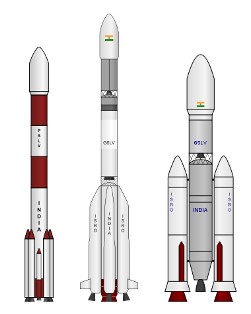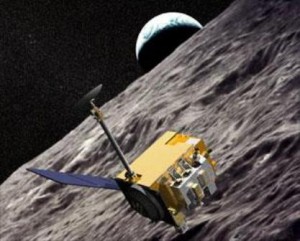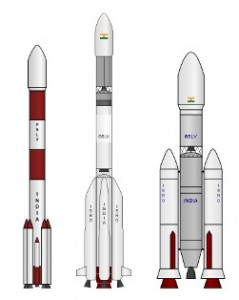India continues to build an independent space launch capability as it strives to join the space elite. Its two main rocket launchers, the PSLV (Polar Satellite Launch Vehicle) and GSLV (Geosynchronous Satellite Launch Vehicle) are going to be very busy this year launching as many as 13 satellites before the year end including one destined to travel to and orbit Mars.
Dating back to 1975 when India launched its first satellite from the Soviet Union, the country has been slowly developing a program with the goal to eventually put Indian astronauts into space. And today it continues to combine launch using foreign rockets as well as its own domestically designed vehicles to put satellites into space.
The PSLV first appeared in 2001 followed by its much larger cousin, the GSLV in 2004. In 2008 India launched Chandrayaan-1, a mission to place a satellite into lunar orbit. The orbiter operated successfully for 10 months before its on board power supply failed.
So what next for India’s Space Research Organisation, known by the acronym ISRO? A Mars orbiter mission is planned for late in the year. And further work on the GSLV launch vehicle may soon make it reliable enough to consider human space launches. Glitches with the upper stage of the GSLV has been the single biggest impediment to India joining the U.S., Russia and China as a space faring nation. But ISRO continues to look to achieving human space flight with a reworked GSLV as the launch vehicle before 2017. The agency has even discussed with Russia if there is available mothballed technology such as human lander that could be acquired for a mission to the Moon.
But it is more likely that India will not be sending human crews into space until early in the next decade. In the interim the country will continue to launch satellites for remote sensing. Plans include the development of an independent global positioning network. And the country remains committed to a second lunar mission within the next two years. Dubbed Chandrayaan-2, it will consist of both an orbiter and rover and will be launched using an improved GSLV.
ISRO’s advanced launch vehicles can be seen in the image below. On the left is the PSLV while the two on the right are the GSLV and the heavier launch vehicle the GSLV Mark III. It is the latter and its successors that will give India the capability to achieve human space flight.



















[…] million U.S. India had hoped to use its next generation launcher for this mission but the program continues to run into problems with the upper stage of its more powerful rocket boosters, the Geosynchronous Satellite Launch […]